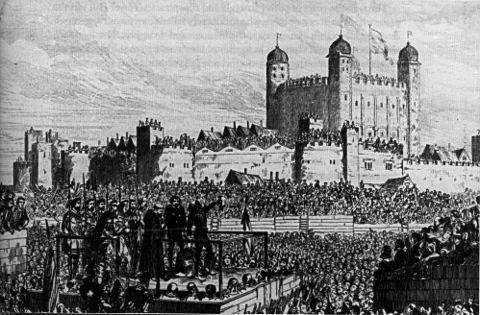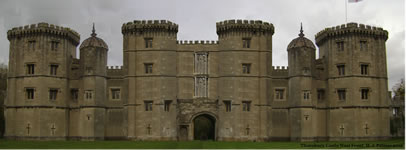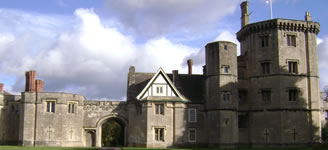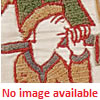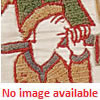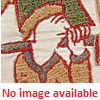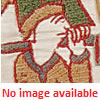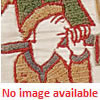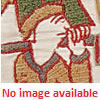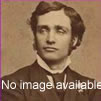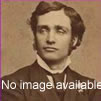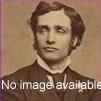| 1: Executed |
|
Sir Henry STAFFORD |
| 1455-1483 |
| He was executed for treason 1483 |
| There is evidence to implicate him in the murder of the 'princes in the tower'. He had claims to the throne coming down through the Beaufort line. He was executed for treason in 1483 following a failed rebellion against Richard III. He attempted to flee the country but he was arrested, convicted of treason and, on 2 November at Salisbury, publicly beheaded. Read his profile here. |
|
|
Sir Edward STAFFORD |
| 1477/8-1521 |
| He was executed for treason 1521. |
| During 1520, Buckingham became suspected of plotting against Henry VIII. The King personally examined witnesses against him, gathering enough evidence for a trial. The Duke was summoned to Court in April 1521 and arrested and placed in the Tower. He was tried before a panel of 17 peers, being accused of listening to prophecies of the King's death and intending to kill the King. He was executed on Tower Hill on 17 May. Read his profile here. |
|
|
Anne BOLEYN. |
| 1501-1536 |
| She was executed for treason 1536. |
| Anne visited Thornbury Castle on a 'progress' to Bristol in 1536. To this day, historians cannot agree why she had to die. Had Henry and Anne’s relationship gone into terminal decline prompting Henry to invent the charges against his wife? Was Thomas Cromwell responsible for Anne’s demise? Or was she indeed guilty of the charges laid against her? Evidence is limited – but there is enough to appear to support several very different conclusions. Anne and 6 courtiers were executed for her alledged adultry. Read her profile here. |
|
|
Thomas HOWARD |
| 1536-1572 |
| He was executed for treason 1572. |
Queen Elizabeth had Thomas imprisoned in 1569 for planning to make Mary, Queen of Scots his 4th wife. Following his release, he participated in the Ridolfi plot with King Philip II of Spain to put Mary on the English throne and restore Catholicism in England. He was executed for treason in 1572. Read his profile here. Later Thomas's 3 times great grandson would bring Thornbury Castle into the Howard family thorough marriage. |
|
|
Sir William HOWARD |
| 1614-1680 |
| He was executed for treason 1680. |
| William was the 3 times great grandson of Thomas Howard executed in1572. He married Mary Stafford to bring the Castle into the Howard family. In 1678, he was implicated by Titus Oates's later discredited 'Popish Plot', and sent to the Tower of London. He was tried and found guilty, although the King was said to have signed the death warrent with tears in his eyes and unable to reprieve him. William was executed on Tower Hill on 29 December 1680. Read his profile here. |
|
|
Thomas STAFFORD |
| c.1533-1557 |
| He was executed for treason 1557. |
| He took part in two rebellions. In 1554 he joined the rebellion against Mary I because of her planned marriage to Philip of Spain. He promoted his claim to the English throne. In 1557 he invaded Scarborough Castle and proclaimed himself 'Protector of the Realm!' He was arrested and beheaded for treason on Tower Hill in1557. Read his profile here. |
|
| 2: Died a prisioner |
|
BRICTRIC |
| c.1011-1083 |
| He was imprisioned in Winchester and died a captive in 1083. |
Beorthtric, AKA Brictric had spurned the advances of Matilda of Flanders when he was ambassador at the court of Baldwin of Flanders. Matilda later married William the Conqueror. She used her position as queen to have revenge on Brictric. He was imprisioned and his lands siezed by William and given to Matilda! He and died a prisoner in Winchester, which was much the same as being executed by the woman whose advances he turned down! Read his profile here. |
|
|
| 3: Died in battle. |
|
|
Robert FITZHAMON |
| c.1045-1107 |
| Died from injuries received in battle. |
| In 1105 he went to Normandy and was captured while fighting near his ancestral estates near Bayeux. This was one of the reasons Henry crossed the channel with a substantial force later that year. Fitzhamon was freed, and joined Henry's campaign, which proceeded to besiege Falaise. There Fitzhamon was severely injured in the head; although he lived two more years he was never the same mentally. Read his profile here. |
|
|
Sir Edmund STAFFORD |
| 1377/8-1403 |
| Died at the Battle of Shrewsbury. |
| He was killed by the Scotsman, Archibald Douglas, 4th Earl of Douglas while fighting with the royalist forces of King Henry IV at the Battle of Shrewsbury on 22 July 1403. Read his profile here. |
|
|
Sir Humphrey STAFFORD |
| 1402-1460 |
| Died at the Battle of Northampton on Lancastrian side |
| The battle of Northampton was fought on 10 July 1460 and was shortened when Edmund Grey, 1st Earl of Kent, turned traitor to the king and ordered his men to lay down arms, allowing the Yorkists access to the camp. In the ensuing fight, Humphrey and 4 other nobles were killed by a group of Kentishmen. Read his profile here. |
|
|
Humphrey STAFFORD |
| 1425-1458 |
| Wounded in battle & died after the Battle of St Albans. |
| Humphrey fought under his father-in-law in support of the House of Lancaster during the First Battle of St Albans. He appears to have been badly wounded at this battle, but eventually died of his wounds or from the plague, predeceasing his own father in 1458. Read his profile here. |
|
|
Sir John HOWARD |
| 1425-1485 |
| Died at the Battle of Bosworth. |
| John was killed at the Battle of Bosworth in 1485 along with Richard III. John was the commander of the vanguard, and his son, Thomas, his lieutenant. Howard was killed when a Lancastrian arrow struck him in the face after the face guard had been torn off his helmet during an earlier altercation with the Earl of Oxford. He was killed prior to Richard III, which had a demoralising effect on the king. Read his profile here. |
|
|
|
|
William of NORMANDY |
| 1056-1100 |
| He may have been murdered! |
| Died hunting when he was shot by an arrow! There are strong but unproven suspicions of murder. Read his profile here. |
|
|
Richard de CLARE |
| 1222-1262 |
| He was possibly poisoned! |
| Richard died at John de Griol's Manor of Asbenfield in Waltham, near Canterbury, 14 July 1262 at the age of 39, it being rumored that he had been poisoned at the table of Piers of Savoy. Read his profile here. |
|

